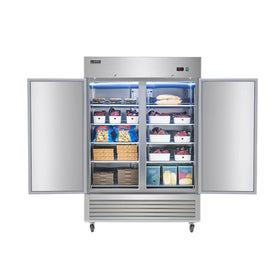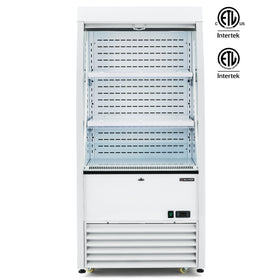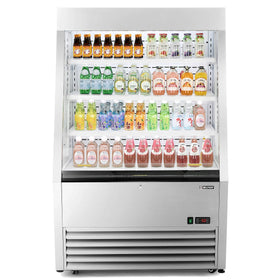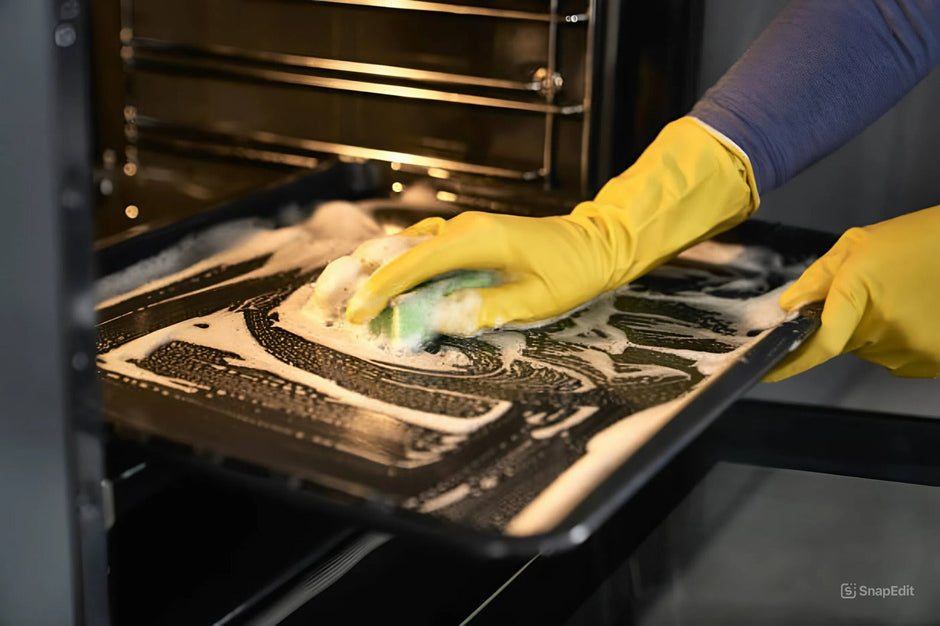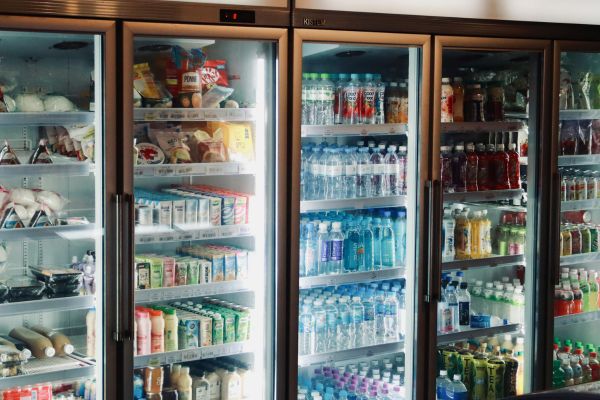The biggest setback you will likely face when starting a salad bar is navigating all the red tape, processes, and procedures required to officially launch it. Then there is the business side of things: How will the business perform? Then there is the issue of day-to-day operation. All in all, you need a lot of information, so your first course of action must be to learn how to start a salad bar.
This guide will take you through the eight most important steps in setting up your salad bar, from conducting initial market research to opening day. Watch out for some recommended commercial kitchen equipment that will help with the day-to-day running of your bar. Let's get started!
1. In-Depth Market Research
Just as with any other kind of business, the first step to success in setting up your salad bar is to identify your target market. Obviously, your potential customer base would be health-conscious individuals, but this generally encompasses a wide group of people with different preferences. To be more exact, you might need to do some market segmentation.

Market segmentation
Market segmentation means grouping all potential ideal customers by profile to best understand how to cater to their particular needs. For a salad bar, you can group potential customers into office workers, gym-goers, and/or college students.
You even go as far as to look at their income levels, eating habits, and frequency of eating out. The more detailed your market segmentation is, the higher your chances of satisfying the customer base.
Competitor Analysis
When you set up in an area, your competitors already have an edge because they have been there longer. You have to find a way to turn this to your advantage, and the best way to do so is to offer something new or introduce a better policy that immediately draws customers' attention.
So, visit local competitors and take detailed notes on the following:
- Menu variety: What types of salads and toppings are they offering?
- Price points: What are their price ranges, and how do they structure pricing (e.g., per ingredient, fixed bowls)?
- Customer flow: At what times do they see the most foot traffic?
- Customer demographics: Who seems to be their primary customers?
- Service style: Are they self-serve or counter-service? How do they handle takeout and delivery?

This information will give you insight into what is already being done and what you can do differently to set your business apart.
2. Come Up with a Comprehensive Business Plan
Think of a business plan as the foundation of everything you do in your salad bar. You must spend much time and effort on it because no building can stand without a solid foundation. Here are the most important aspects that must be covered in your business plan.
Menu Design
Your menu must include a core set of signature salads that customers generally love, but make sure you also allow for "build-your-own" bowls where customers can choose their base, proteins, veggies, toppings, and dressings.
Having signature dishes is how to come up to par with your competitors, but creating a “build-your-own” style service may be one avenue where you set yourself apart.

Examples
- Signature Salads: Pre-designed recipes (Caesar Salad, Mediterranean Salad, Protein Power Bowl)
- Build-Your-Own: Offer options for greens (e.g., spinach, romaine), grains (e.g., quinoa, farro), proteins (e.g., grilled chicken, tofu, shrimp), and an array of toppings and dressings.
- Extras: Consider sides like soup, fresh fruit cups, or wraps, as well as drinks like smoothies, kombucha, or fresh juices.
Pricing Strategy
To develop a good pricing strategy, consider not only the cost of each item but also the price the customer would be willing to pay for it. Your competitors' pricing practices may give you a point of reference.
Hint: Most salad places consider tiered pricing based on portion size, premium ingredients, or number of toppings.
Example: Base salad price $7, premium protein add-ons for $2-4 extra.
Location Choice
Generally speaking, any area with high foot traffic would make a good spot for a salad bar. However, the closer you are to offices, gyms, or universities, the better. These are the areas where you will likely find the most demand for your menu items.
3. Licensing and Permits
You don't want any trouble with the government, so obtaining all the required licenses and permits is crucial. For a salad bar, here is a list of licenses you would likely need.
- A Business License: Ensures that your business will function in accordance with all local laws
- Health Department Compliance: To make sure the food is healthy and safe.
- Food Handler Permits: All employees handling food must have food handler certifications. Some states require a specific number of managers to hold ServSafe certifications.
- Fire Safety and Zoning: Ensure your kitchen meets fire codes, especially if you have cooking equipment.

4. Equipment and Supply Chain Setup
Kitchen equipment will be crucial for day to day operation of your salad bar. However, commercial kitchen equipment can be very costly, so it is advisable to buy just what you need, especially at the beginning. Here is some equipment you will need at this early stage.
A Tip About How to Purchase Commercial Equipment
When it comes to commercial kitchen equipment, it is time-saving and more affordable to get all the necessary equipment from a single supplier. Many top-quality suppliers out there have a collection of commercial equipment for sale whose goal is to help young food businesses get on their feet. One such supplier is Wilprep’s Kitchen. You can get all the following equipment from Wilprep:
For Your Salad Bar Setup
By far, the most important piece of equipment needed in any salad bar is a salad prep table. This equipment is so valuable because it is multipurpose and can be used for both salad prep and ingredient storage.
Single Door Commercial Salad Prep Table Refrigerator

This 29-inch single-door refrigerated sandwich prep table features a 6.5 cu. ft. volume, a full-length cutting board, and 8 GN 1/6 pans, offering ample space for smooth sandwich and salad preparation and backup ingredient storage.
It has a high-quality compressor and copper evaporator, which work together to ensure fast, even cooling and optimal temperature to prevent ice buildup.
Depending on the size of your menu, you might need a bigger salad prep table. In that case, you can check out the many models Wilprep has in its collection. There are 48" 2 Door Commercial Salad Prep Tables, 72" Commercial Salad Prep Tables, and much more.
You also need:
- Stainless steel containers for ingredients.
- Sneeze guards to protect the food.
Other Kitchen Equipment
- You also need commercial refrigerators to store produce at a salad bar. A display refrigerator like a commercial glass door reach-in refrigerator, would be perfect for size and capacity. For bigger options, you can check out Wilprep’s display refrigerator collection.

- Prep tables, knives, cutting boards, and utensils are needed for your preparation process. Wilprep offers a variety of prep stations for all kitchen spaces. Check out this collection of selected prep table refrigerators for a suitable option.
- You can always rely on Kyoku knives for knives and cutting equipment.
If you intend to serve proteins like chicken or roasted vegetables along with your salad offerings, you will also need commercial ovens, grills and griddles.
You can get all of this from Wilprep for a discounted price. Wilprep offers commercial convection ovens, electric griddles, and the most reliable chef bases to enable you to cook different meals simultaneously in any space. You will be sure to find the perfect option.
For your bar setup, you can get the following offers from Wilprep:
Getting Suppliers
Find a reliable vendor for fresh produce (local farms, farmer’s markets, or larger suppliers).
Order dry goods (like grains, nuts, and dressings) from wholesalers to reduce costs.
Keep a list of backup suppliers in case of delays or shortages.
5. Marketing Strategy
Your marketing strategy should be clear and memorable, but most importantly, it should reflect your brand offers. For a salad bar, your brand must communicate freshness, quality, and health. This messaging should be reflected in the logo you choose, the store signage, and the menu design.
Digital Presence
Create a website that allows customers to order online. Many customers prefer pre-ordering for pickup, especially during busy lunch hours.
Also, remember to be active on social media. Maintain active social media accounts to post pictures of your salads, customer testimonials, and promotions.
Hint: Instagram works particularly well for food businesses, where appealing visuals can attract followers.
Special Promotions:
Price reductions always draw more customers in. Here are some examples of instances where you can offer special promotions.
- Offer a soft opening with free samples or discounts.
- Create loyalty programs or special discounts for repeat customers.
- Partner with local gyms, yoga studios, or health clubs to offer exclusive promotions.
Online Ordering and Delivery
Partner with popular delivery apps like UberEats, DoorDash, or GrubHub to reach a wider audience.
6. Ongoing Operations and Growth
Getting your business up and running is just the first step. Now the real journey begins. The fact that almost 20% of all businesses fail after the first year shows the importance of managing ongoing operations and growth. Here are some crucial areas to pay attention to, especially in your first years.
- Inventory Management: Use your POS system to track ingredient usage and adjust orders to minimize waste.
- If you frequently sell out of certain ingredients, adjust your inventory or menu to keep up with demand.
- Customer Feedback: Place suggestion cards or encourage online reviews. Use feedback to fine-tune your menu, service, or even pricing.
- Menu Adjustments: Rotate seasonal ingredients to keep the menu fresh. You could also introduce limited-time offers (LTOs) to test new recipes.
Some Concluding Thoughts
By following these steps methodically, you’ll be well-prepared to launch and run a thriving salad bar business! Remember to get the right equipment, pay attention to ongoing operations, and keep track of progress.
Wilprep prides itself on being a companion to small food businesses. As your business expands, you can always rely on us for your commercial kitchen equipment. Remember to check for tips on how to maintain your equipment and make the most of it. For more details on the equipment you need, you can check out our blog on the top equipment you need to start a salad bar.


